Creating a beautiful garden in a limited space requires creativity, thoughtful planning, and smart use of vertical and horizontal dimensions. Whether you have a tiny patio, balcony, or courtyard, small garden ideas range from innovative container solutions to clever design tricks that maximize every inch. Below are 20 detailed ideas—each with practical tips, plant suggestions, and design inspirations—to help you transform even the coziest outdoor area into a lush, functional oasis.
1. Vertical Gardens

Vertical gardens, also known as living walls, leverage vertical space by mounting planters, pockets, or modular panels on walls or fences. Ideal for balconies or narrow patios, they free up ground area while adding a striking green backdrop. Choose lightweight, weather-resistant materials like felt planter pockets or metal wall grids. Select a mix of trailing plants (e.g., ivy, string-of-pearls) and compact bloomers (e.g., petunias, lobelia) to create visual layers. Incorporate drip irrigation or self-watering systems to ensure even moisture. Verticals also help insulate walls and improve air quality, making them both beautiful and beneficial for small urban gardens.
2. Raised Garden Beds
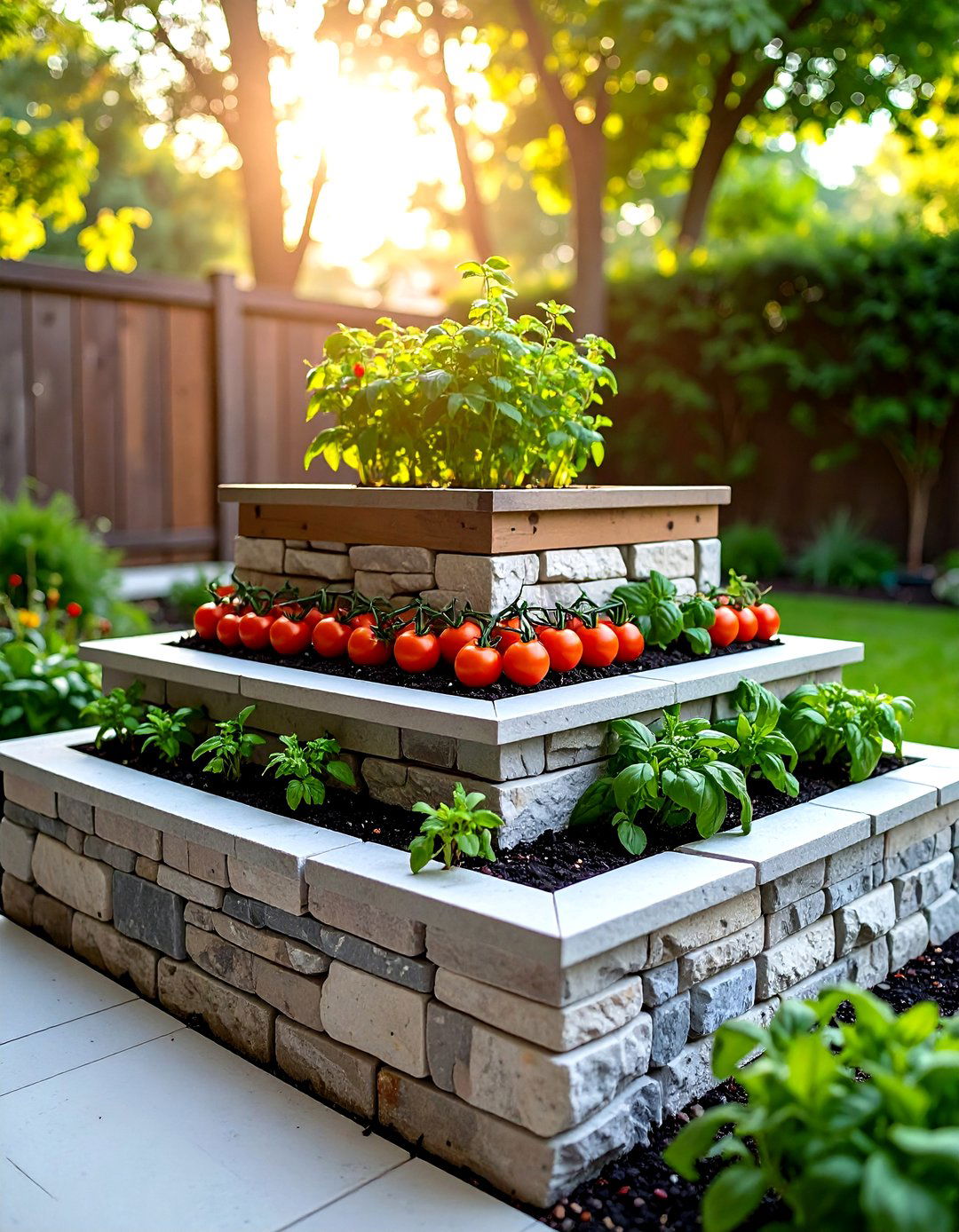
Raised beds lift soil above ground level, improving drainage and soil quality—key for small, possibly compacted urban plots. They can be built from wood, stone, or metal and come in various sizes to fit patios, decks, or tiny backyards. Benefits include easier weeding, reduced back strain, and the ability to define garden zones. For even more impact, use tiered raised beds, stacking multiple levels to grow a variety of vegetables or flowers. Choose compact heirloom vegetables (e.g., cherry tomatoes, baby carrots) and shallow-rooted herbs (e.g., basil, cilantro) to maximize yield in a confined footprint.
3. Container Gardening
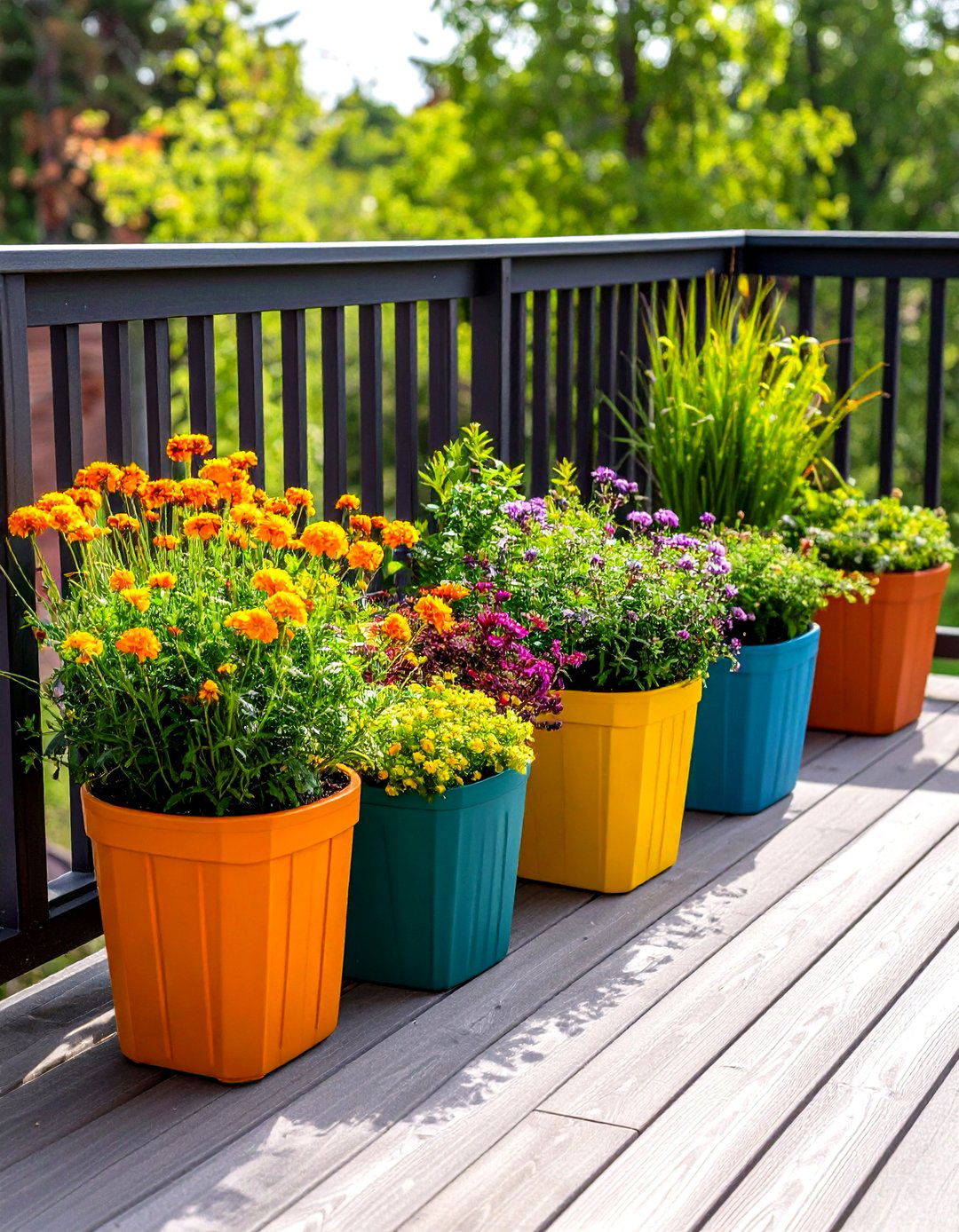
Containers offer unmatched flexibility for small gardens: you can move plants to chase sunshine, protect them during cold spells, and rearrange layouts at will. From classic terracotta pots to modern fiberglass planters, containers come in all sizes and shapes. Group pots of varied heights and widths to create depth. Use lightweight potting mixes and add slow-release fertilizer granules to sustain plants. Ideal container subjects include dwarf shrubs, ornamental grasses, and annual blooms like marigolds. For a cohesive look, select pots in complementary colors or materials. Containers also work on balconies, rooftops, and even window sills.
4. Hanging Baskets

Hanging baskets are perfect for injecting color and greenery without sacrificing floor space. They work well under pergolas, roof eaves, or along balcony rails. Choose well-draining baskets lined with coco coir or moss and fill with trailing plants such as fuchsia, calibrachoa, or ivy geranium. Mix in upright fillers like sweet potato vine or bacopa for fullness. To reduce watering frequency, look for baskets with built-in reservoirs or use water-retentive soil amendments. Hanging baskets can be clustered at varying heights to create a lush curtain effect that dramatically transforms a compact outdoor area.
5. Arched Trellis
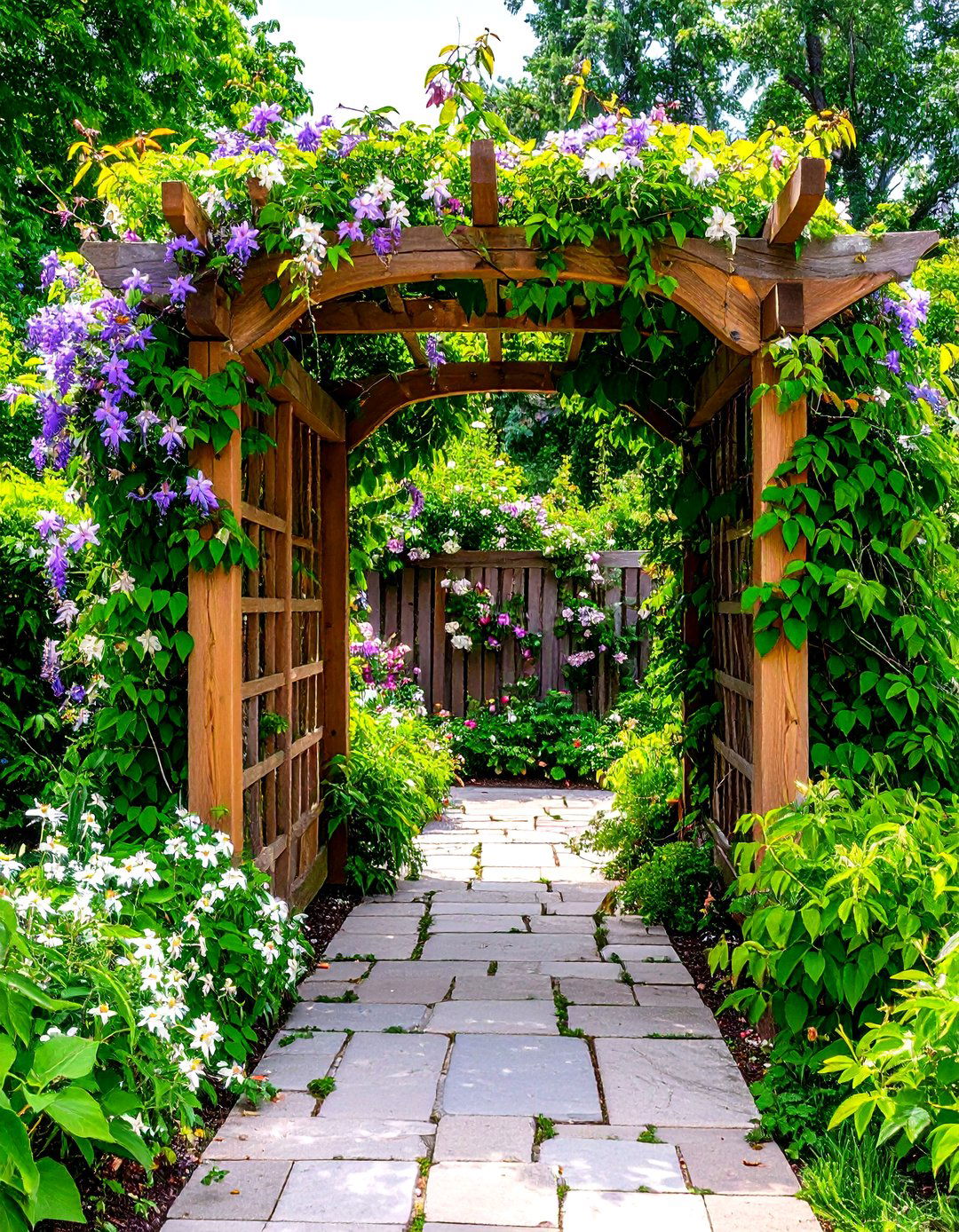
An arched trellis creates a stunning focal point and adds height to small gardens. Position it at an entryway or mid-garden to guide the eye and frame views. Grow climbing plants such as clematis, roses, or jasmine along the arch for seasonal blooms and fragrance. Ensure sturdy installation—use concrete anchors or heavy base pots—to support mature vines. Arches not only beautify but also provide partial shade and vertical interest. In narrow pathways, a single arch can define “rooms,” while multiple arches in series create a romantic garden corridor.
6. Pallet Planters
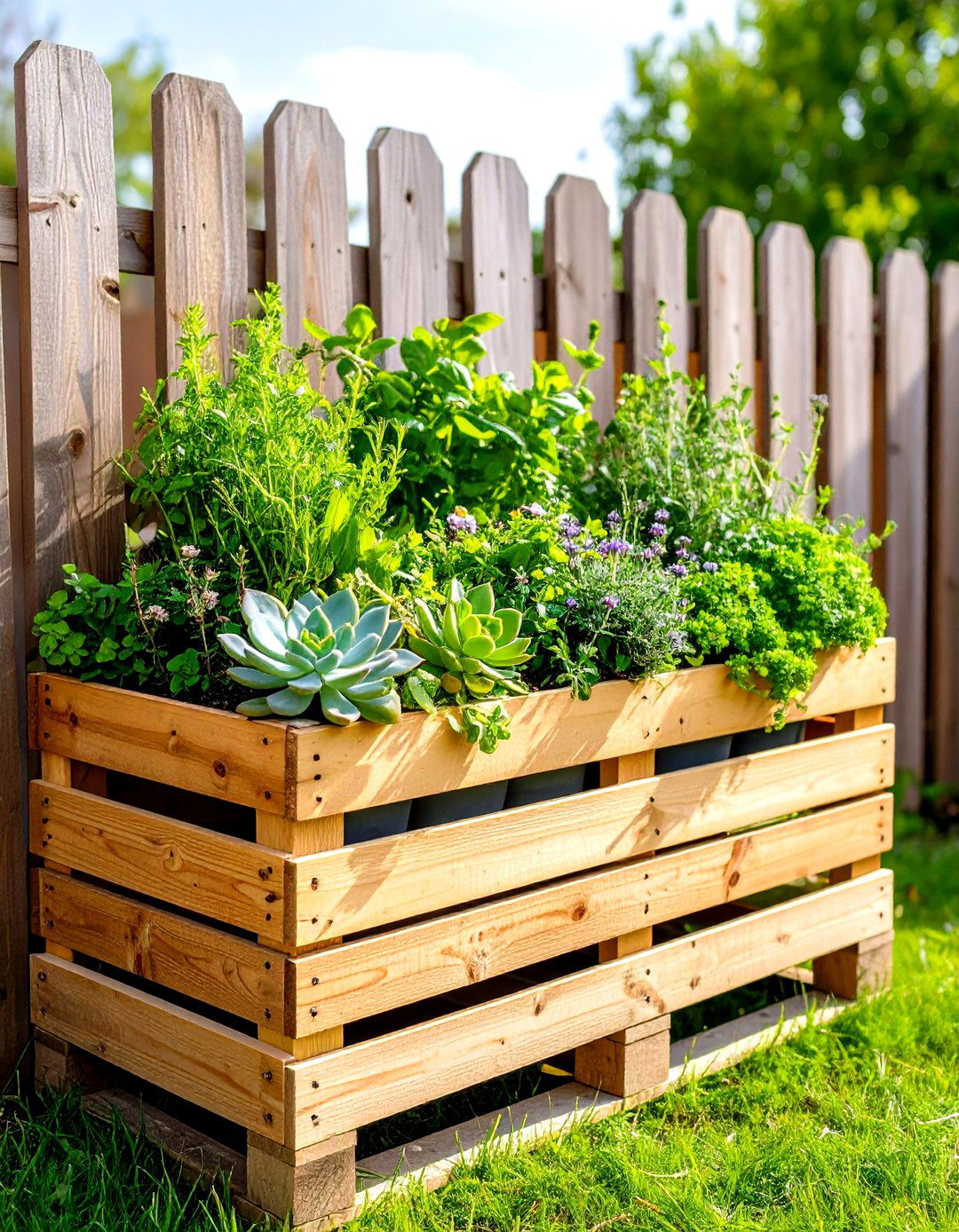
Upcycled wooden pallets can be repurposed into vertical or tiered planters, perfect for DIY enthusiasts on a budget. Securely sand and seal pallets to protect wood from rot. Add landscape fabric or plastic liner to create soil pockets, then fill with potting mix. Ideal for herbs, succulents, and small annuals, pallet planters can lean against fences or be mounted upright. Their staggered shelves allow for varied plant heights and easy harvesting. This low-cost solution not only adds rustic charm but also reinforces sustainable gardening practices by reusing materials.
7. Garden Mirrors
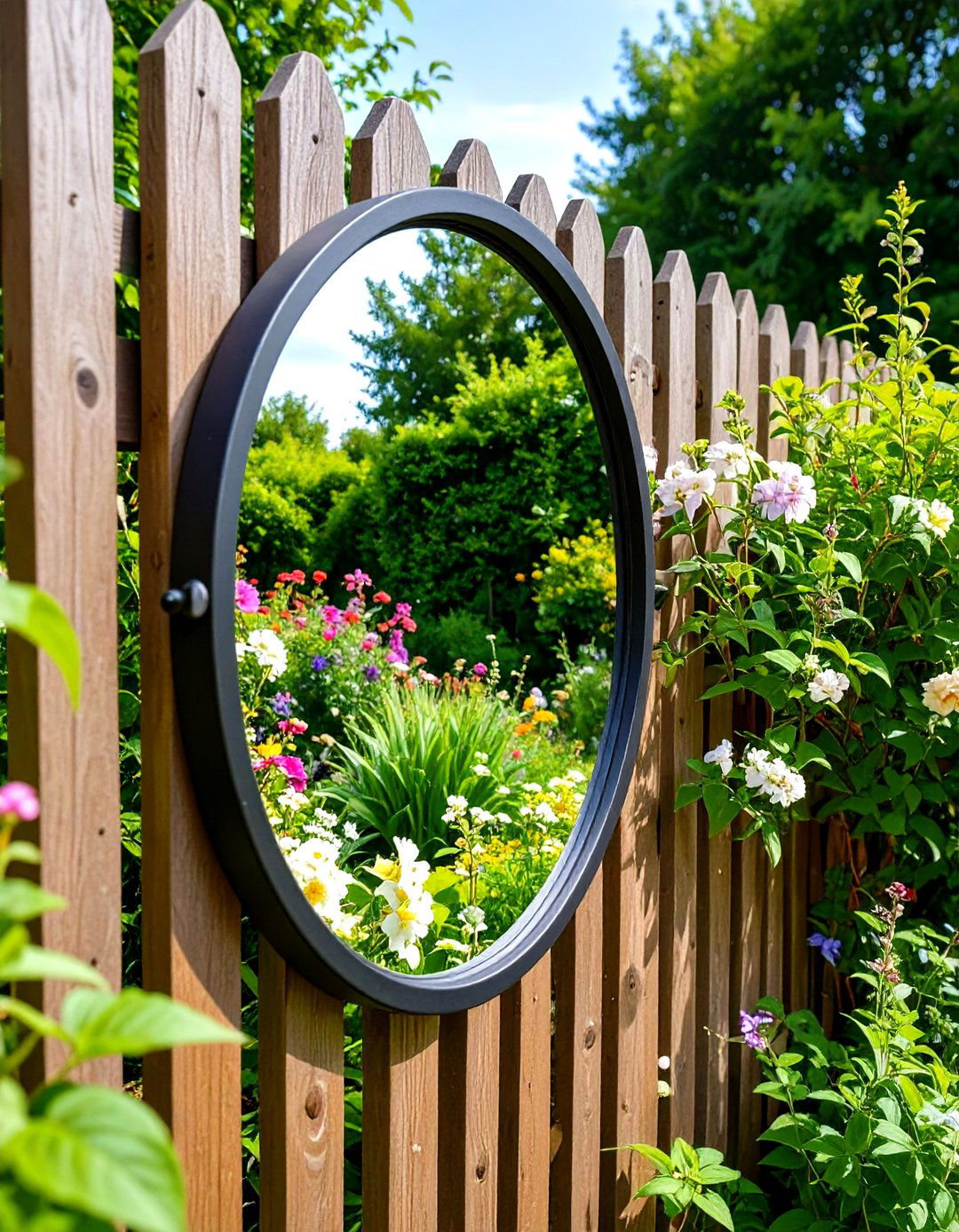
Strategically placing weatherproof mirrors in a small garden creates the illusion of extended space by reflecting greenery and light. Mount mirrors on walls or fences at eye level to visually double garden width or mirror a focal point like a planter grouping. Choose frames that complement your garden’s style, from sleek metal for modern looks to distressed wood for a cottage vibe. Ensure mirrors are securely fixed and cleaned regularly to maintain clear reflections. This simple design hack is cost-effective and instantly makes tight spaces feel more open and airy.
8. Tiered Planters
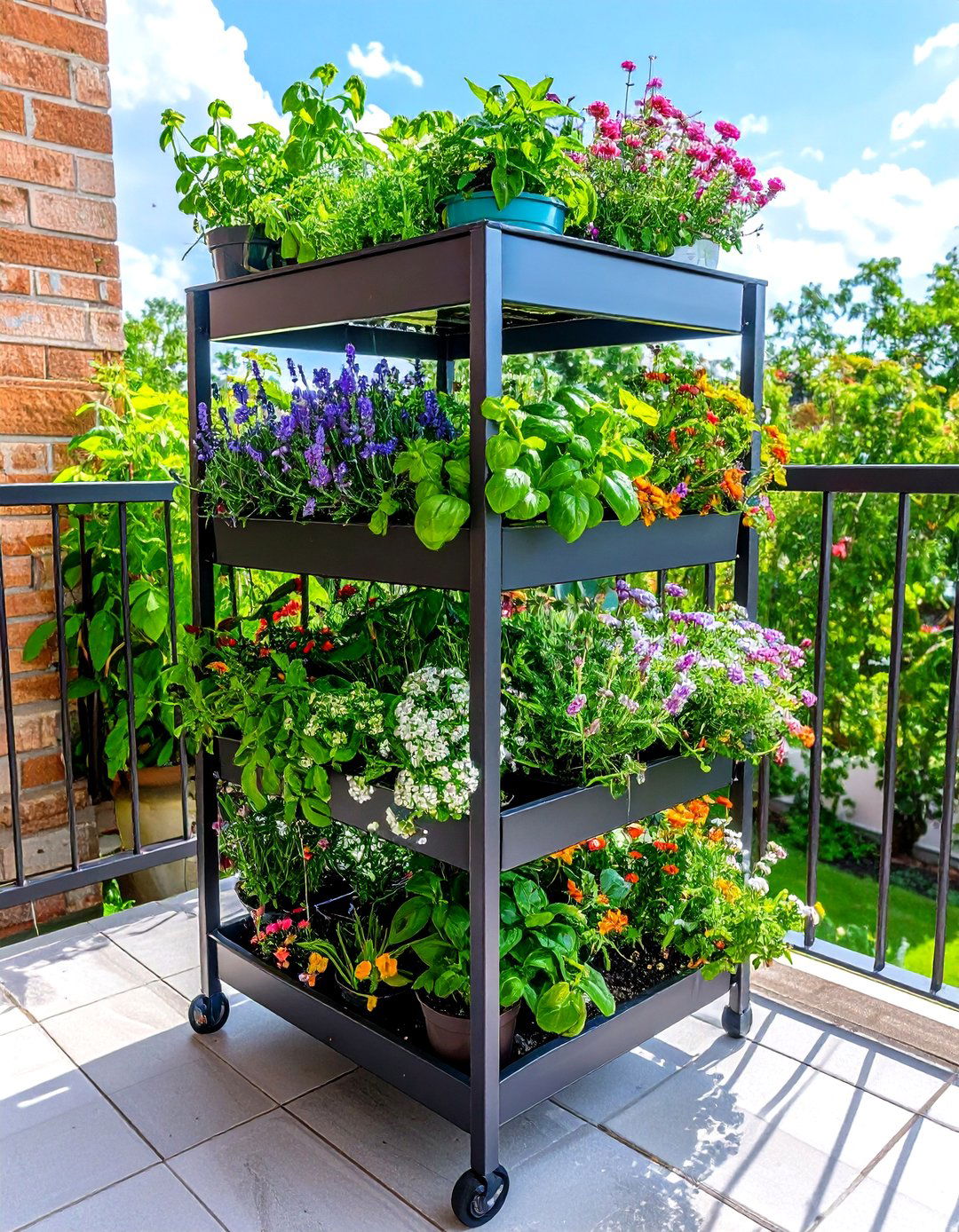
Tiered planters—stacked pots or multi-level stands—maximize vertical depth and allow growing different plants at each level. Use metal or terracotta tiers for durability. Lower tiers can hold larger, shallow-rooted plants like lettuces, while upper levels accommodate trailing vines or colorful annuals. Tiered planters are ideal for small patios or balcony corners, forming compact, self-contained gardens. The varying heights create dynamic visuals and make harvesting easier as plants are at eye level. Opt for modular systems if you anticipate rearranging units frequently.
9. Succulent Walls
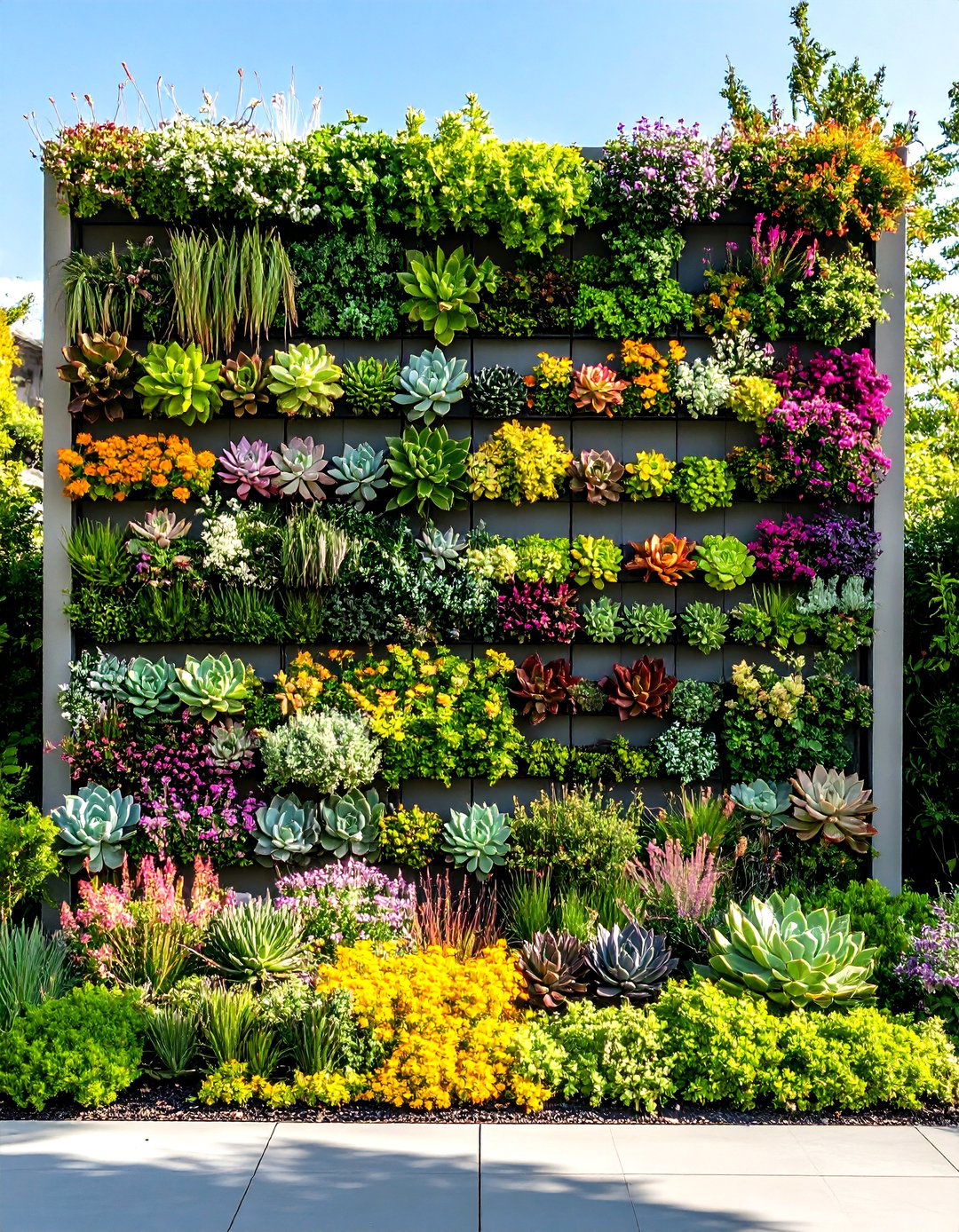
Succulents thrive in shallow soil and sunny spots, making them excellent for wall-mounted containers. Use pre-made succulent wall planters with integrated irrigation or DIY frames lined with mesh and geotextile fabric. Arrange a mix of echeveria, sedum, and crassula to combine textures and colors. Water sparingly to prevent rot and choose south- or west-facing walls for best sun exposure. Over time, succulents will fill in gaps, creating a living tapestry. Succulent walls also require minimal maintenance, ideal for gardeners with less time.
10. Pocket Planters

Felt pocket planters attach to fences or railings and feature individual pouches for small plants. They are lightweight and easy to install. Grow herbs like thyme and oregano or flowers such as pansies and impatiens. Because pockets drain quickly, use moisture-retentive substrates and water more frequently. The staggered pockets create a mosaic of greenery, perfect for blank walls. Pocket planters are also flexible: panels can be expanded or moved to new locations as needed.
11. Herb Spirals
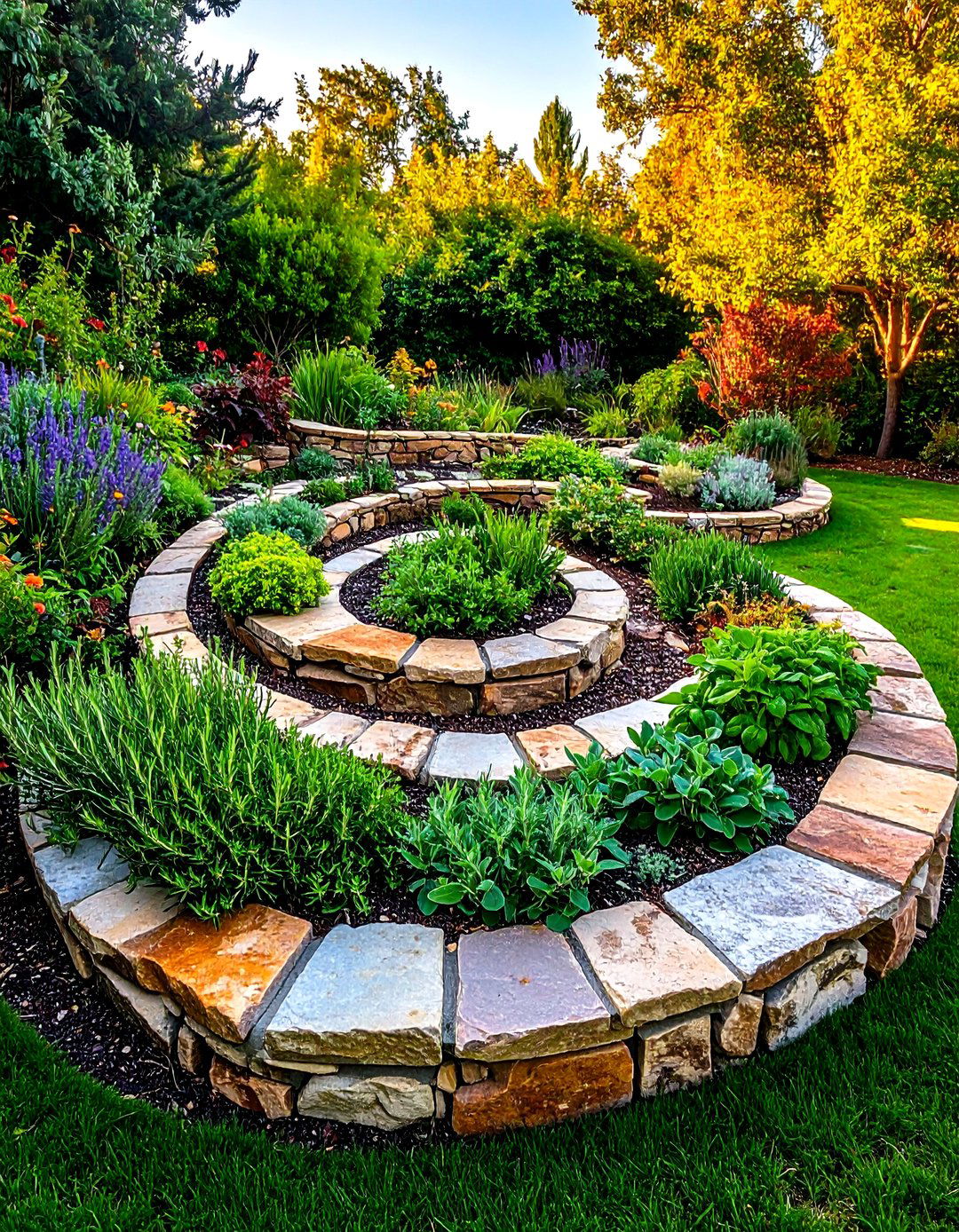
A herb spiral is a spiral-shaped mound or structure that maximizes growing space and creates microclimates—drier at the top, moister at the bottom. Build with stones, bricks, or wood, spiraling upwards about 1 meter. Plant drought-tolerant rosemary and thyme at the top, medium-water herbs like sage mid-spiral, and moisture-loving basil and parsley at the base. The design allows easy harvesting and looks sculptural. Herb spirals suit small backyards and can be constructed on raised beds or compact allotments.
12. Window Boxes
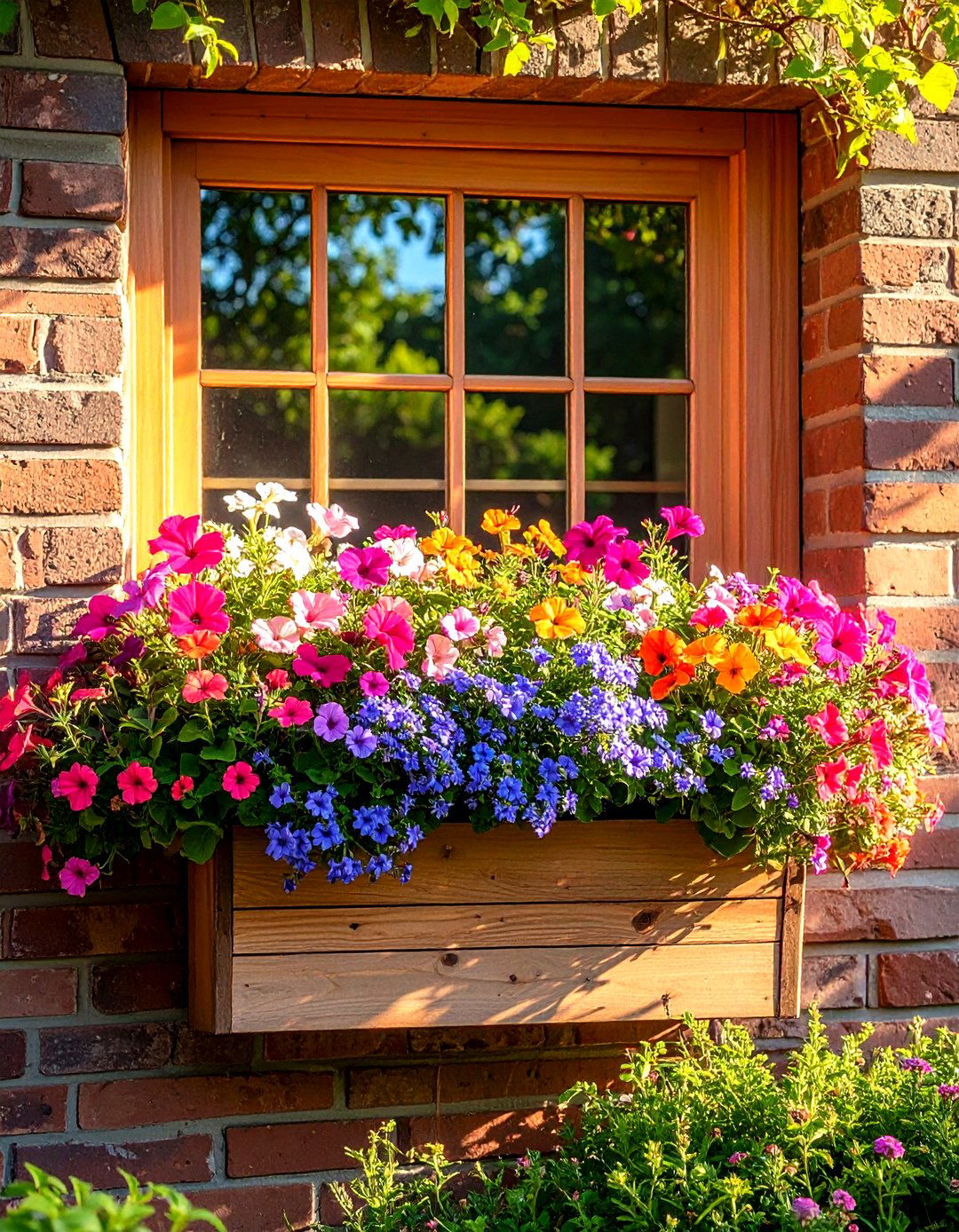
Window boxes instantly green up façades and are ideal for flowers, herbs, or trailing vines. Choose boxes sized proportionally to windows and equip with drip trays to catch overflow. Mount securely with brackets rated for weight. Plant combinations like petunias with trailing lobelia or thyme with chives add both color and fragrance. Window boxes warm interiors in cooler months by buffering cold air. They’re also easily changed seasonally—swap spring pansies for summer geraniums and autumn mums.
13. Fairy Gardens
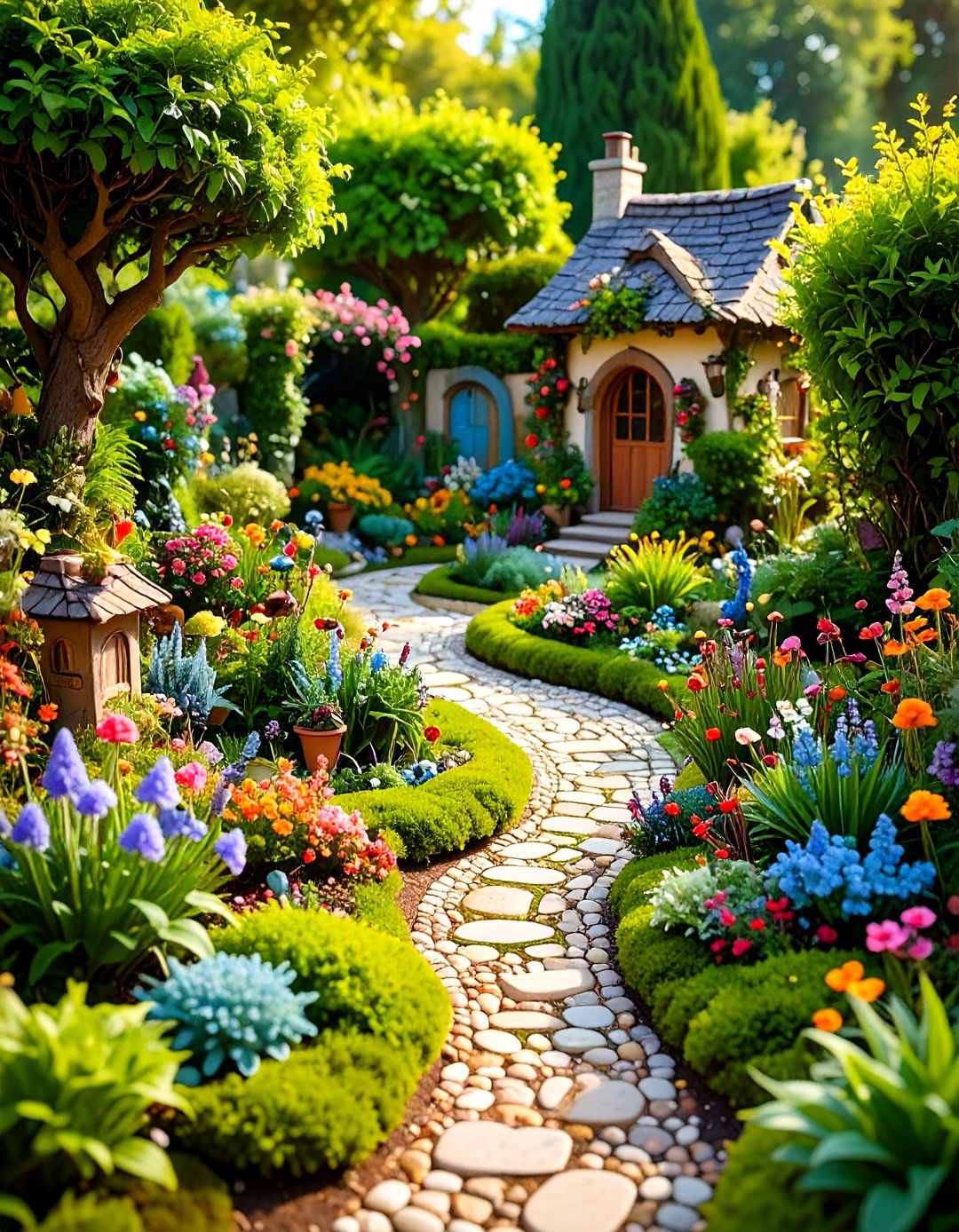
Create whimsical miniature landscapes in shallow containers or corner crevices, using small pebbles for pathways, tiny plants like baby tears, and miniature ornaments (benches, fairy figurines). Use succulents or mosses to simulate lawns and groundcovers. Fairy gardens add charm to patios or as focal points among larger plants. They require minimal space—even a single urn can hold an entire fairy universe. Regularly prune to maintain scale and refresh décor seasonally.
14. Rock Gardens
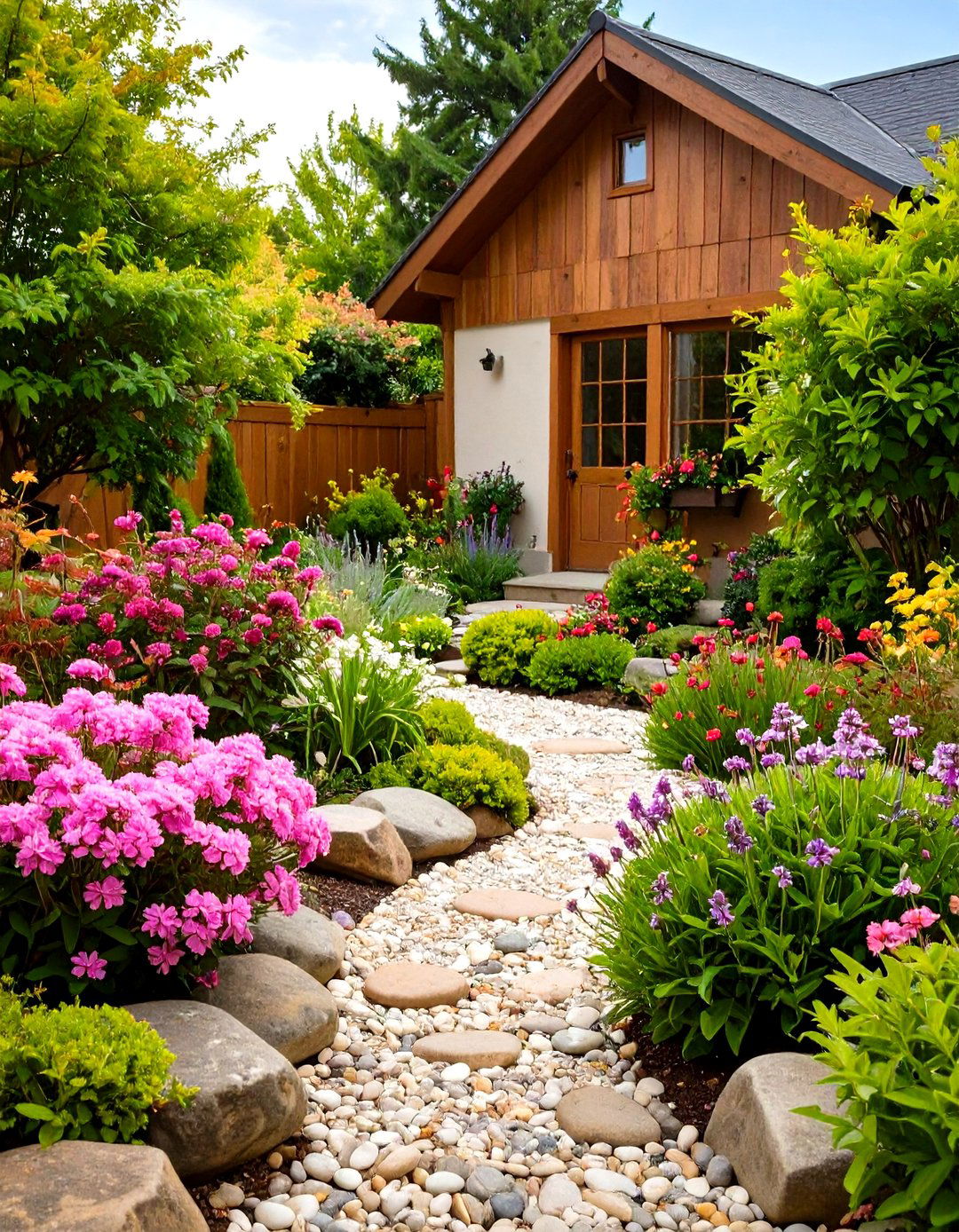
Rock gardens combine stones, gravel, and alpine or drought-tolerant plants for a low-maintenance, sculptural look. Use raised beds or slope terrain slightly for drainage. Select rock-loving plants like sedum, creeping phlox, and dianthus. Gravel mulch suppresses weeds and retains soil warmth. Rock gardens work well in tiny courtyards or sloped balconies, adding texture and contrast. Incorporate driftwood or larger boulders for visual anchors.
15. Succulent Dish Gardens
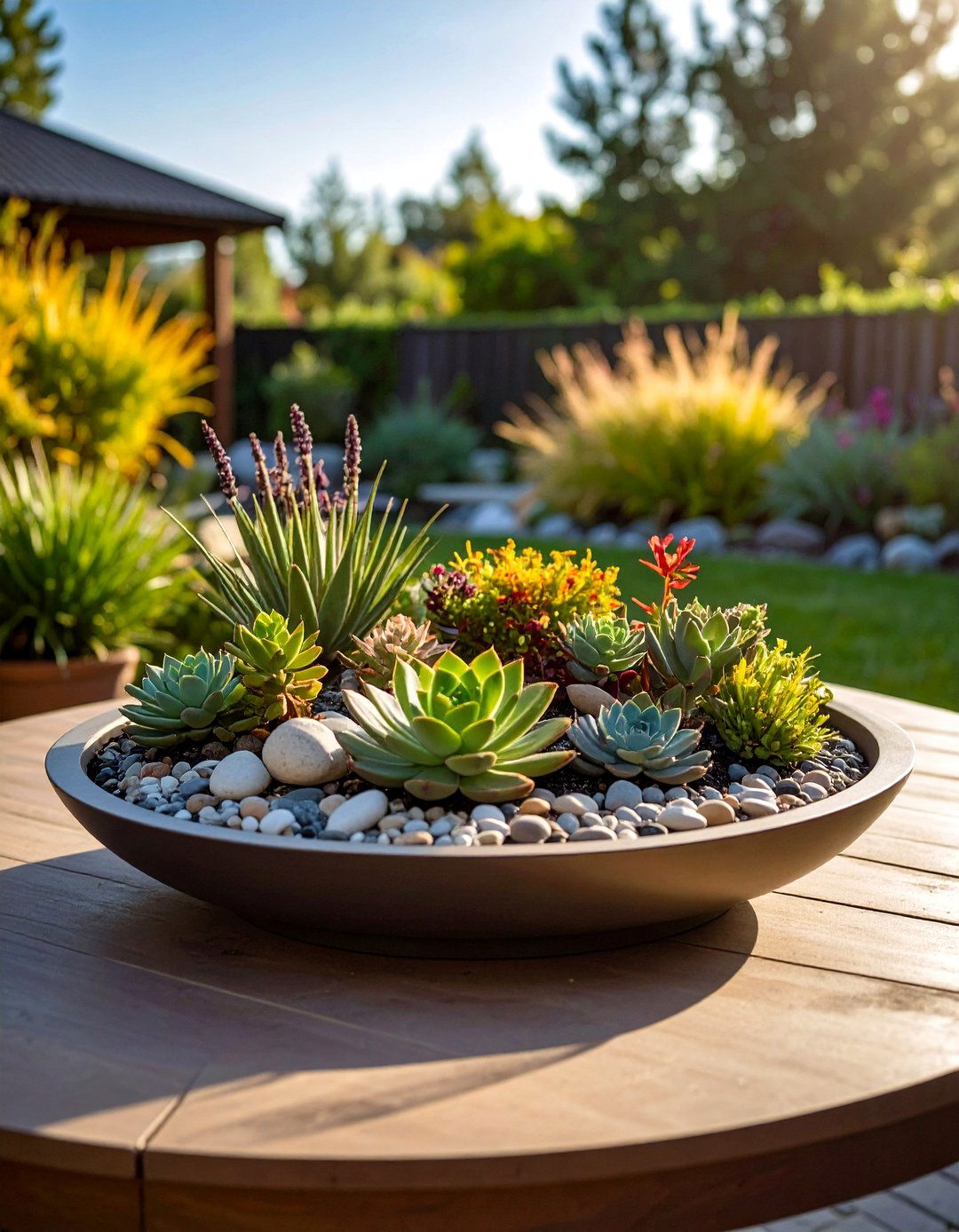
Arrange mixed succulents—haworthia, aloe vera, sempervivum—in shallow dishes with well-draining cactus mix. Group varieties by size and leaf shape for textural appeal. Dish gardens fit on tables, shelves, or narrow sills, providing green accents without encroaching on floor space. Add decorative stones or sand layers for color contrasts. Their low water needs and compact form make them ideal for tight spaces and busy gardeners.
16. Edible Walls
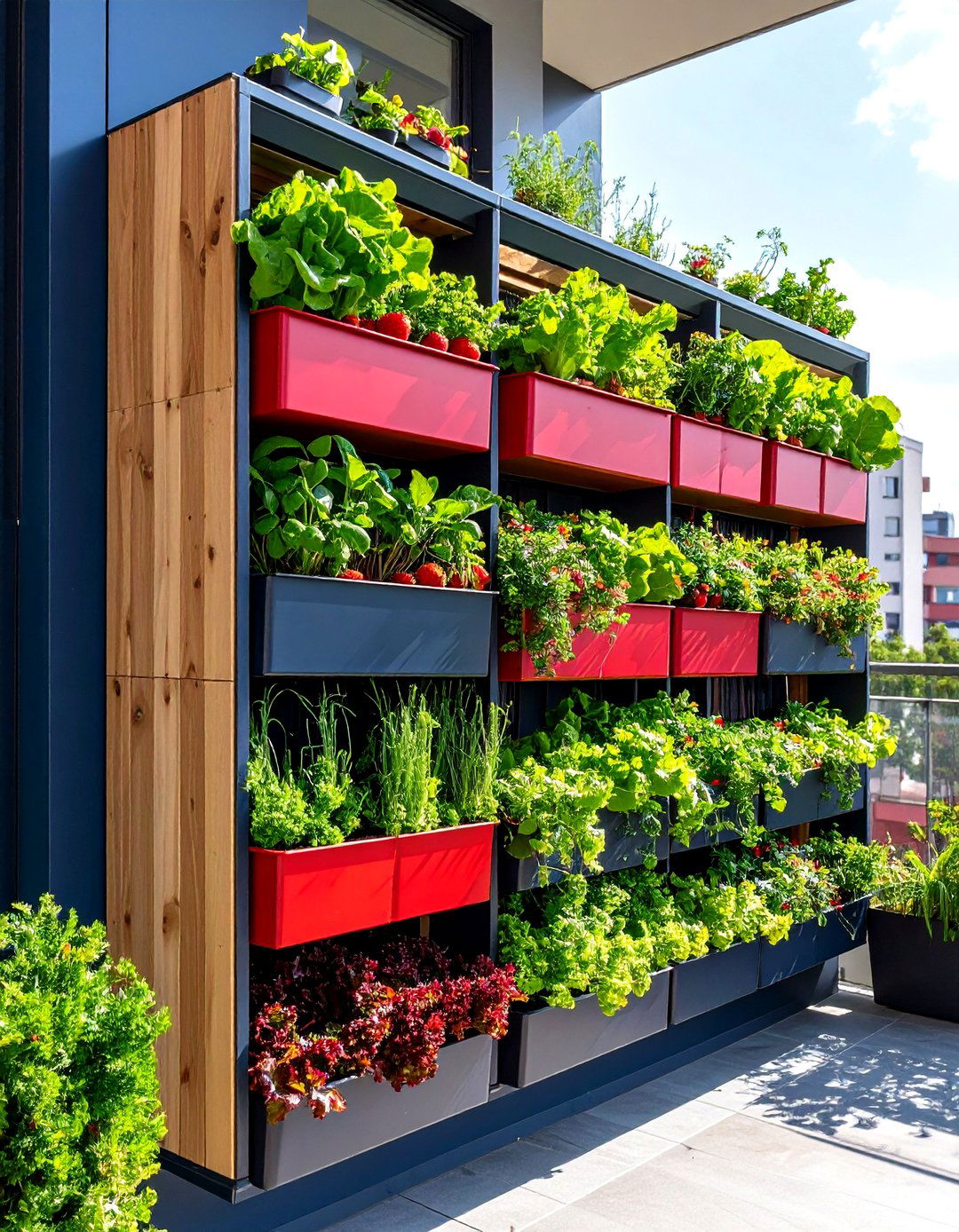
Grow salad greens, strawberries, or cherry tomatoes in vertical pockets or gutters mounted on walls or railings. Use lightweight grow bags or recycled PVC gutters lined with landscape fabric. Edible walls provide fresh produce year-round and maximize small footprints. Rotate crops seasonally to maintain productivity. Combine ornamentals and edibles for both beauty and function.
17. Mini Water Features
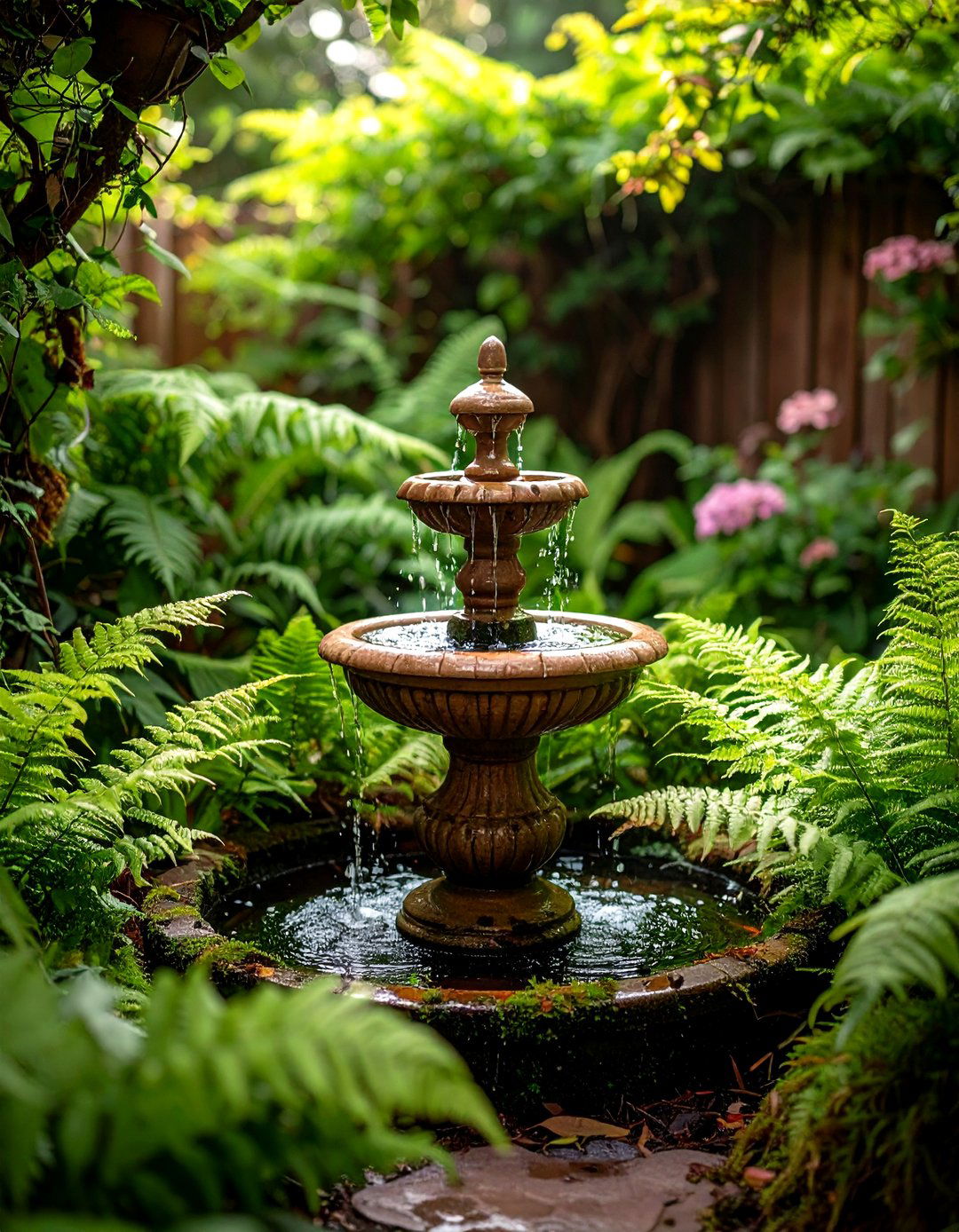
Introduce a tabletop or corner fountain for sound, movement, and a cooling effect. Choose self-contained units with recirculating pumps. Options include ceramic urn fountains, small birdbaths on pedestals, or wall-mounted cascades. Surround with moisture-loving plants like ferns to soften edges. Mini water features attract birds and pollinators, adding life and serenity to compact gardens.
18. Path Optimization
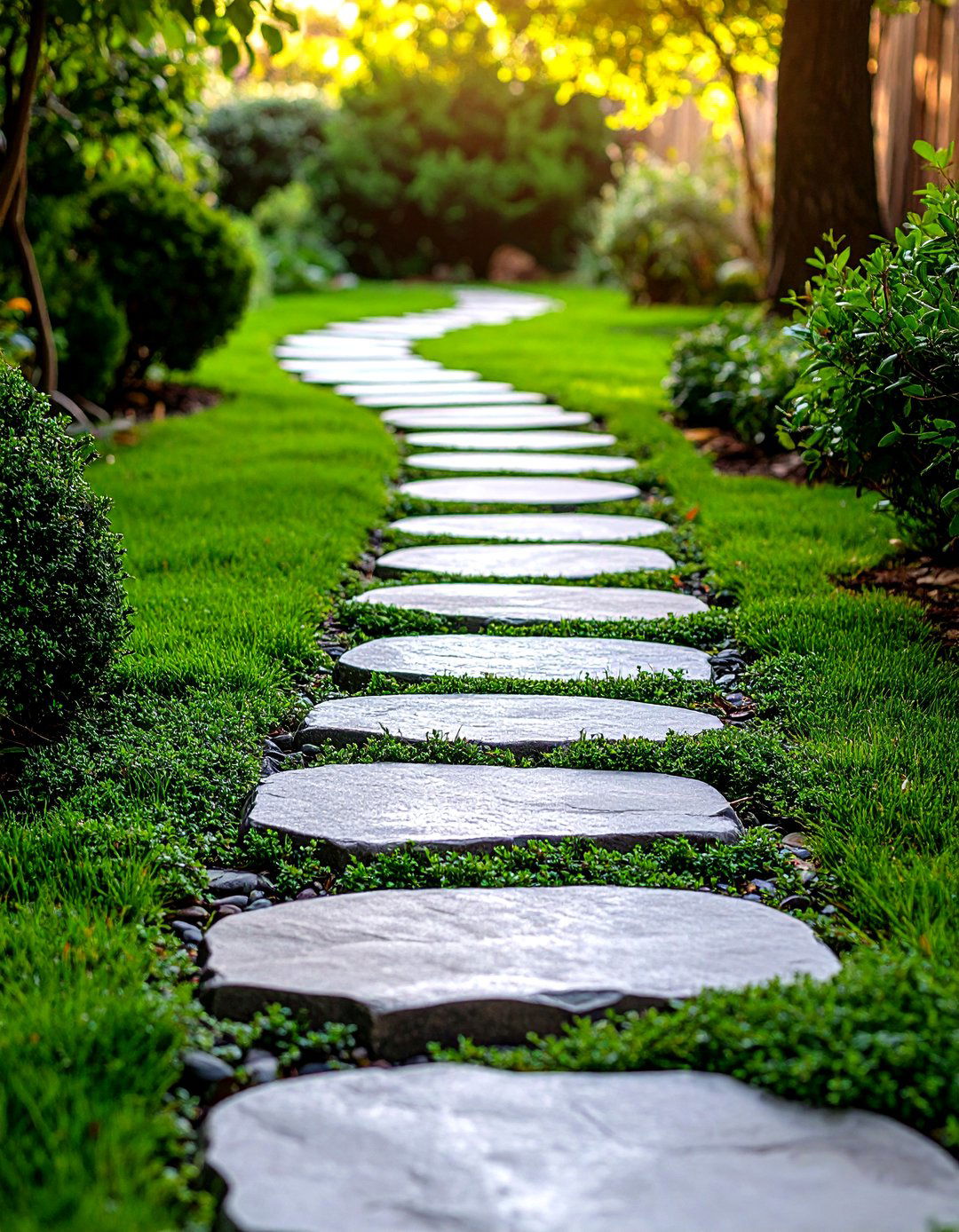
In tiny gardens, narrow winding paths create the illusion of depth. Use gravel, stepping stones, or decomposed granite to define walkways. Alternate larger pavers with groundcovers like thyme to soften hard edges. Curved paths draw the eye along the garden, making it feel larger. Incorporate edging materials (brick, metal) to contain groundcover and prevent sprawl.
19. Integrated Seating Planters
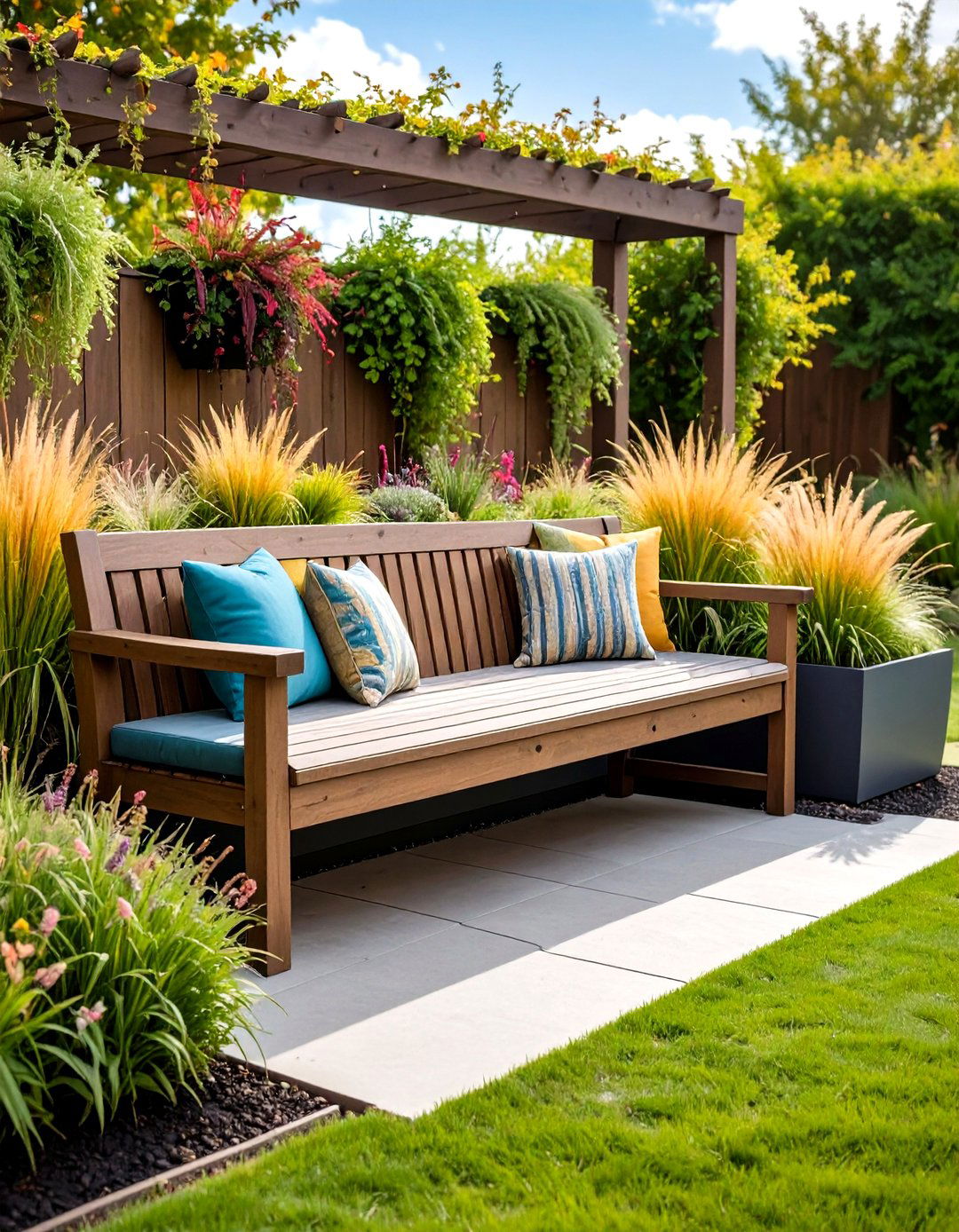
Combine seating benches with built-in planters at ends or along backs for green cushions. Wooden or metal bench-planter hybrids provide both function and greenery. Choose durable materials and line planter interiors to prevent rot. Fill with trailing vines or ornamental grasses to soften seats’ hard lines. These multifunctional pieces maximize seating and planting in one footprint.
20. Multi-Functional Furniture
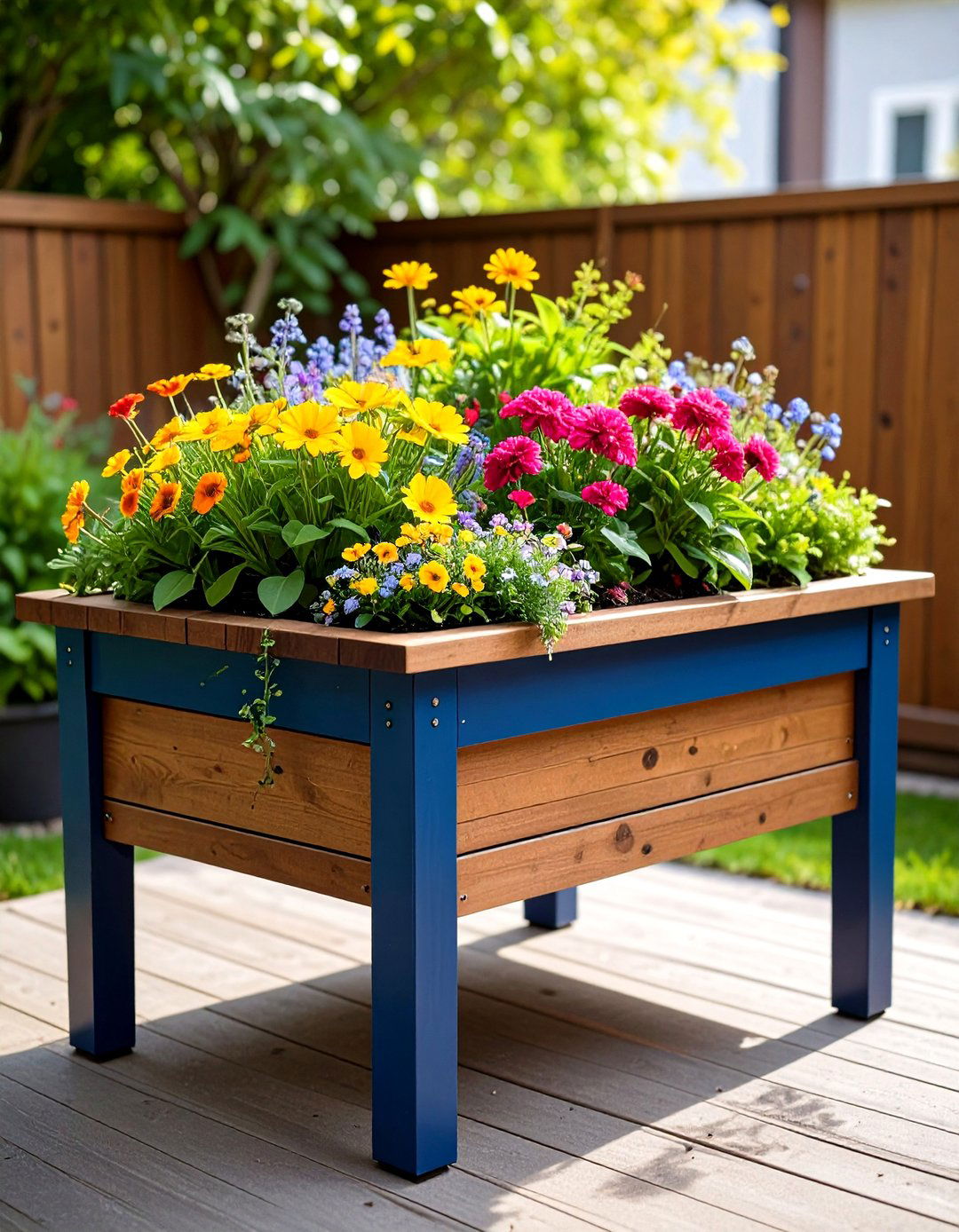
Opt for foldable or modular garden furniture that doubles as storage or planters. Benches with under-seat storage can hold tools or cushions. Tables with removable planter centers let you switch between dining and planting. Choose lightweight, weather-resistant materials for easy rearrangement. Multi-functional pieces keep small spaces uncluttered while providing versatility.
Conclusion:
By embracing vertical solutions, multi-functional elements, and clever design tricks—such as mirrors and winding paths—you can transform even the smallest outdoor nook into a lush, inviting garden. From container arrangements and raised beds to fairy gardens and edible walls, these 20 ideas prove that limited space is no barrier to creativity. Thoughtful plant selection, efficient irrigation, and modular furniture further enhance usability, ensuring your small garden remains both beautiful and practical year-round. With these strategies, every square inch becomes an opportunity to cultivate greenery, color, and serene outdoor living.


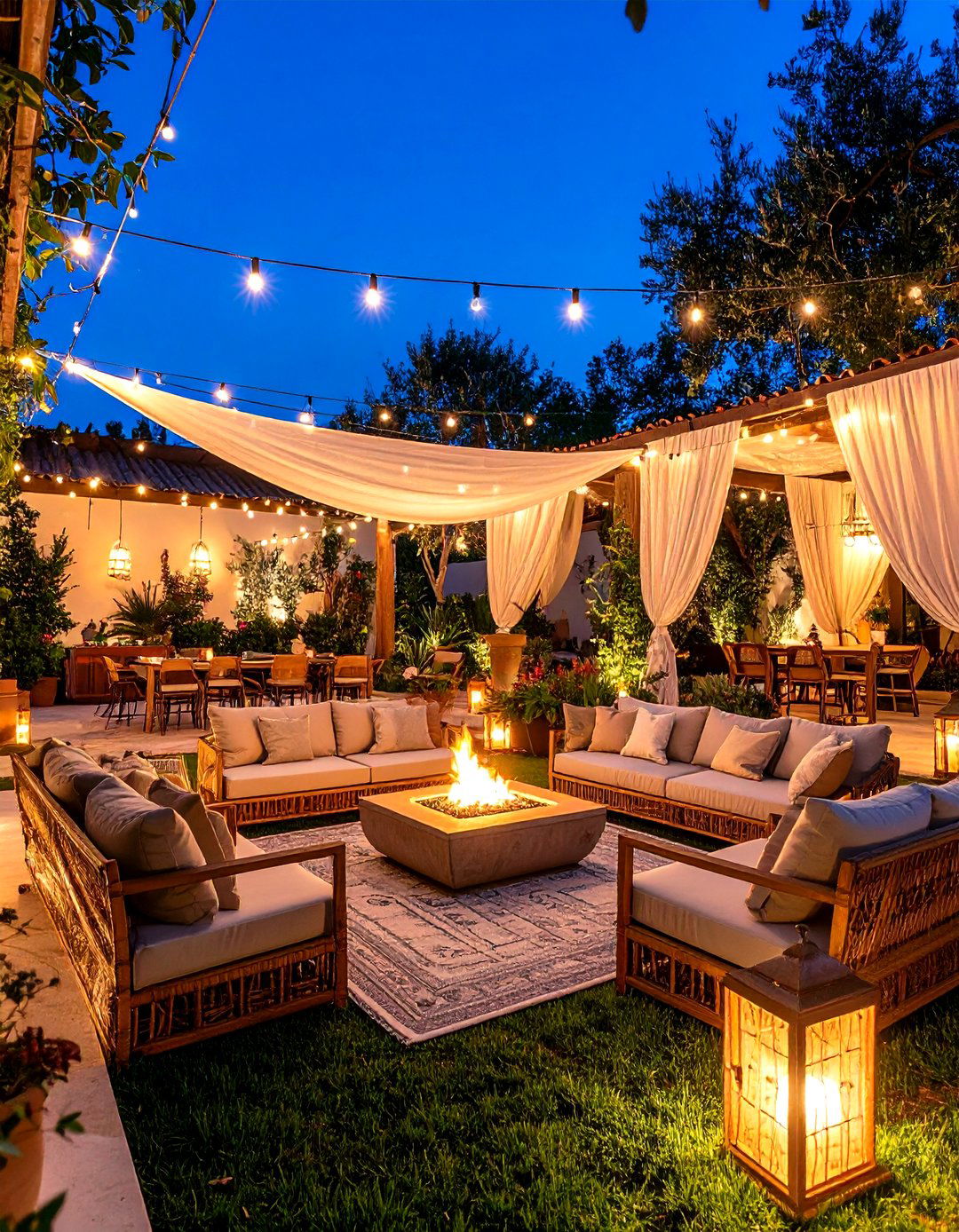
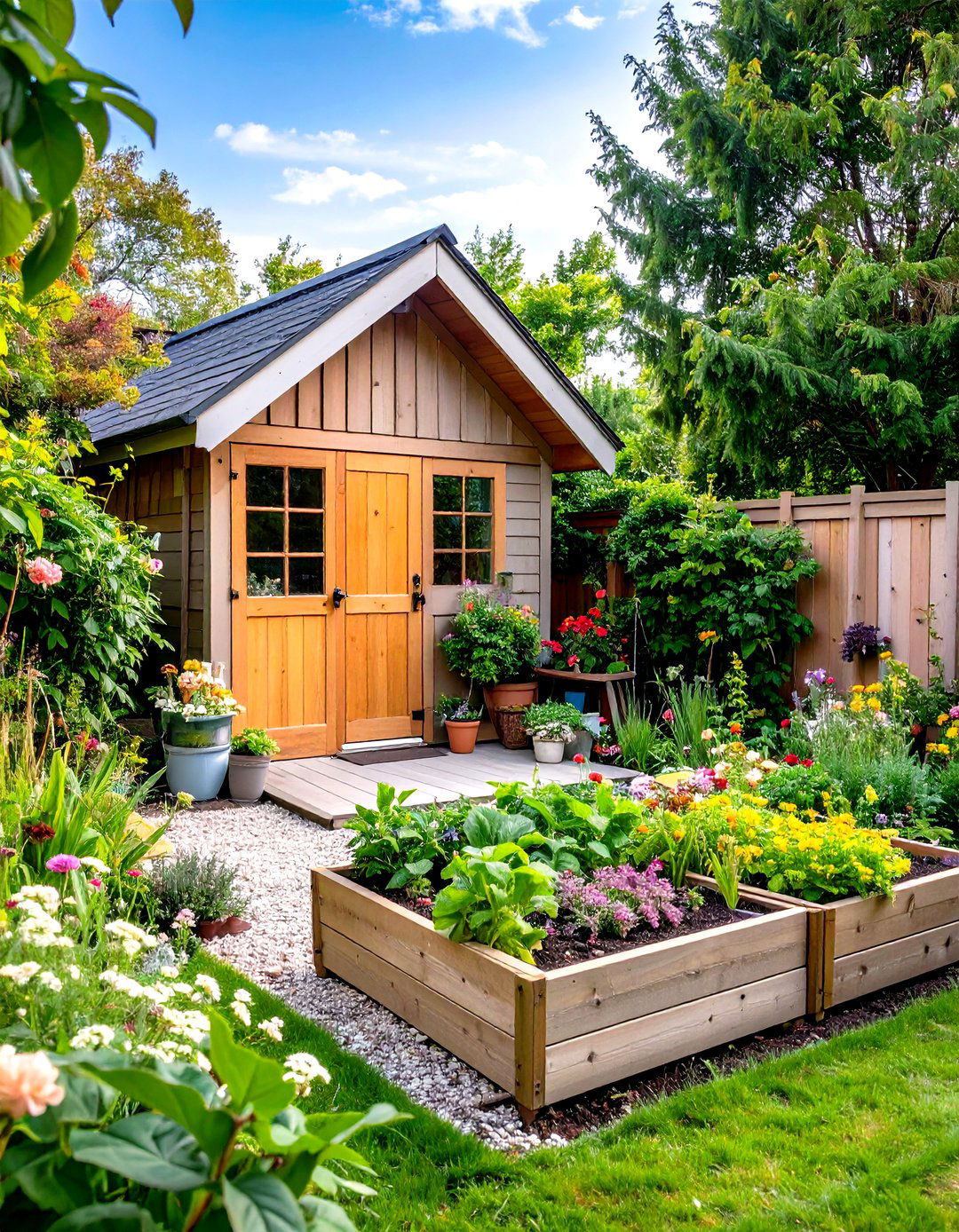
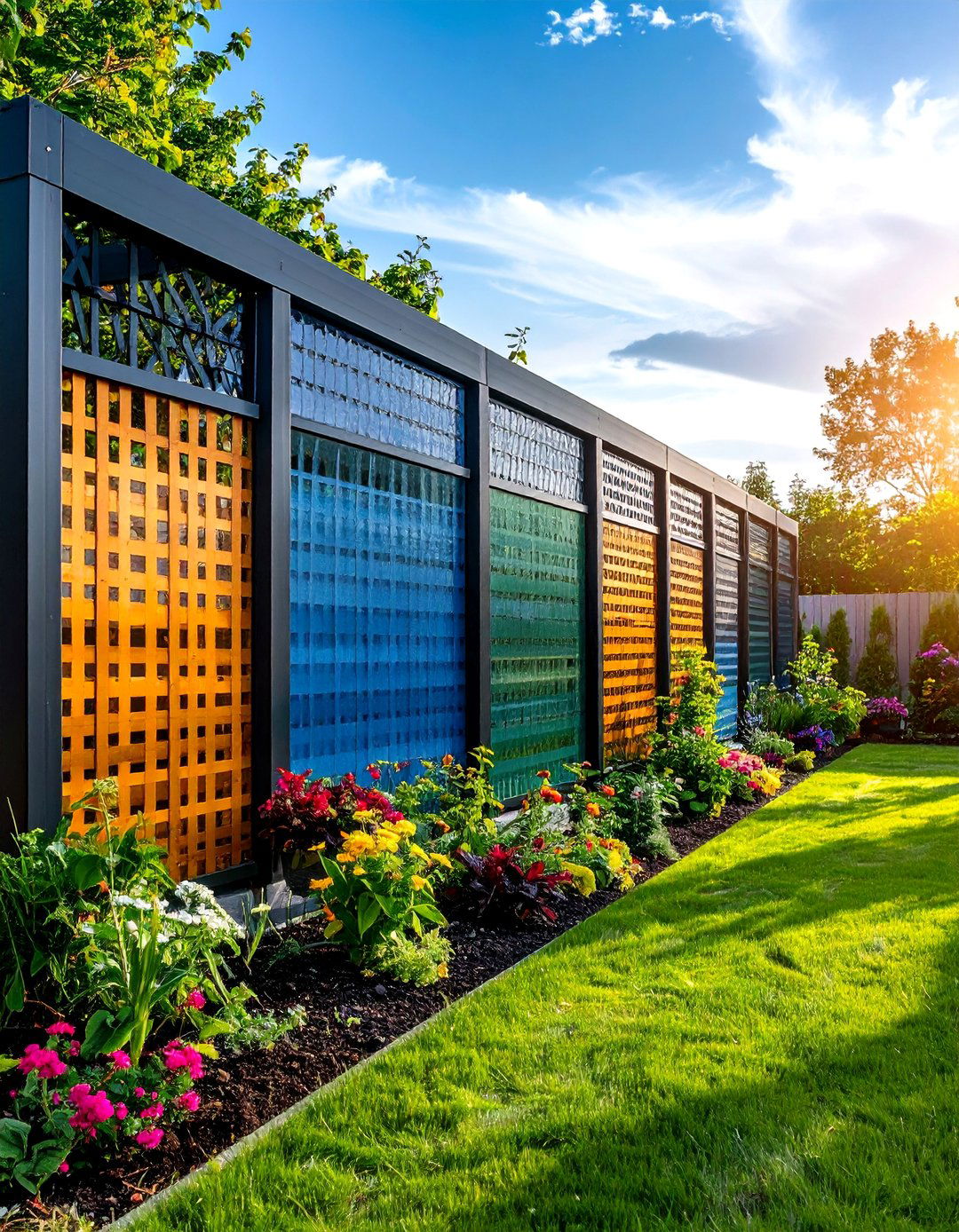
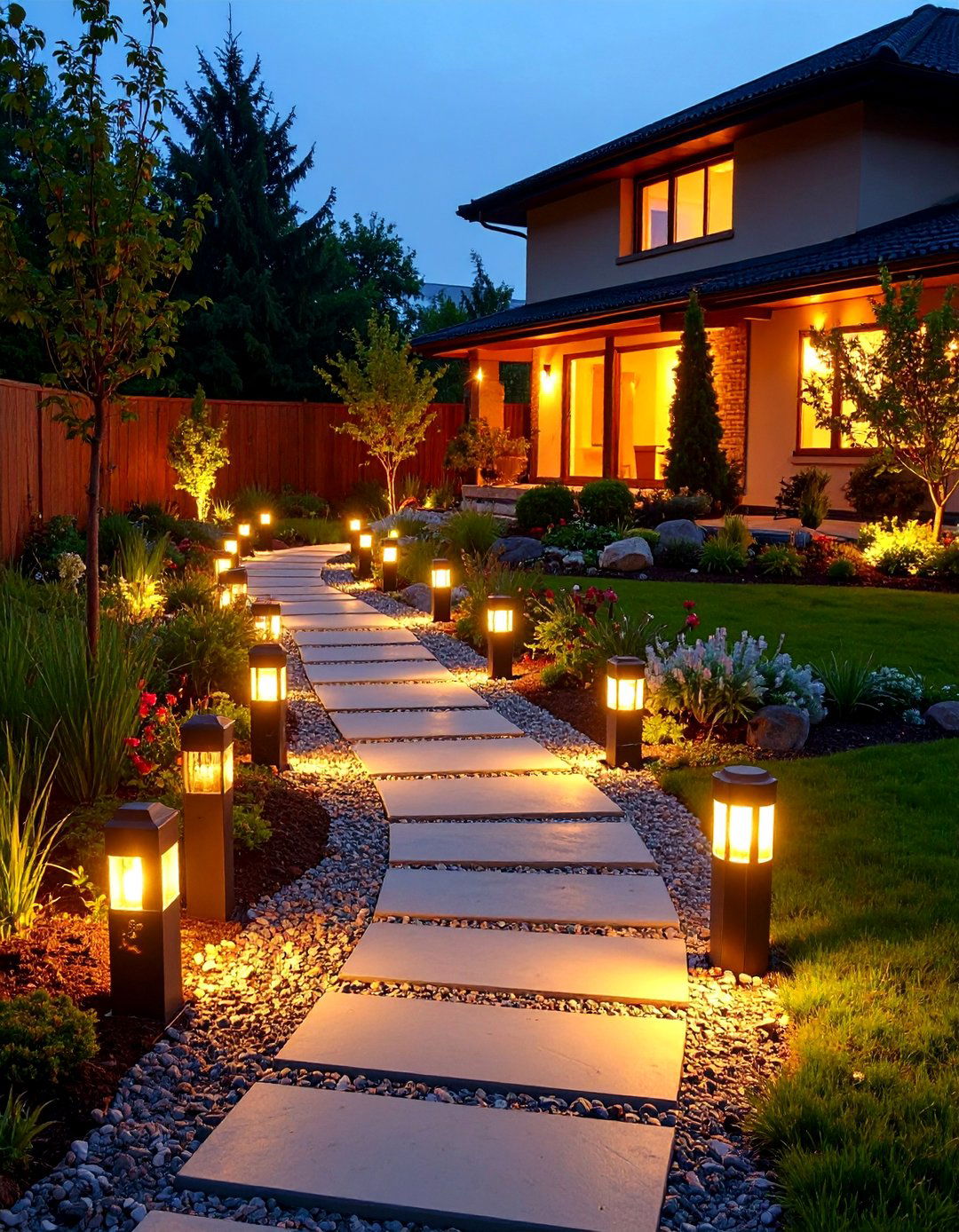
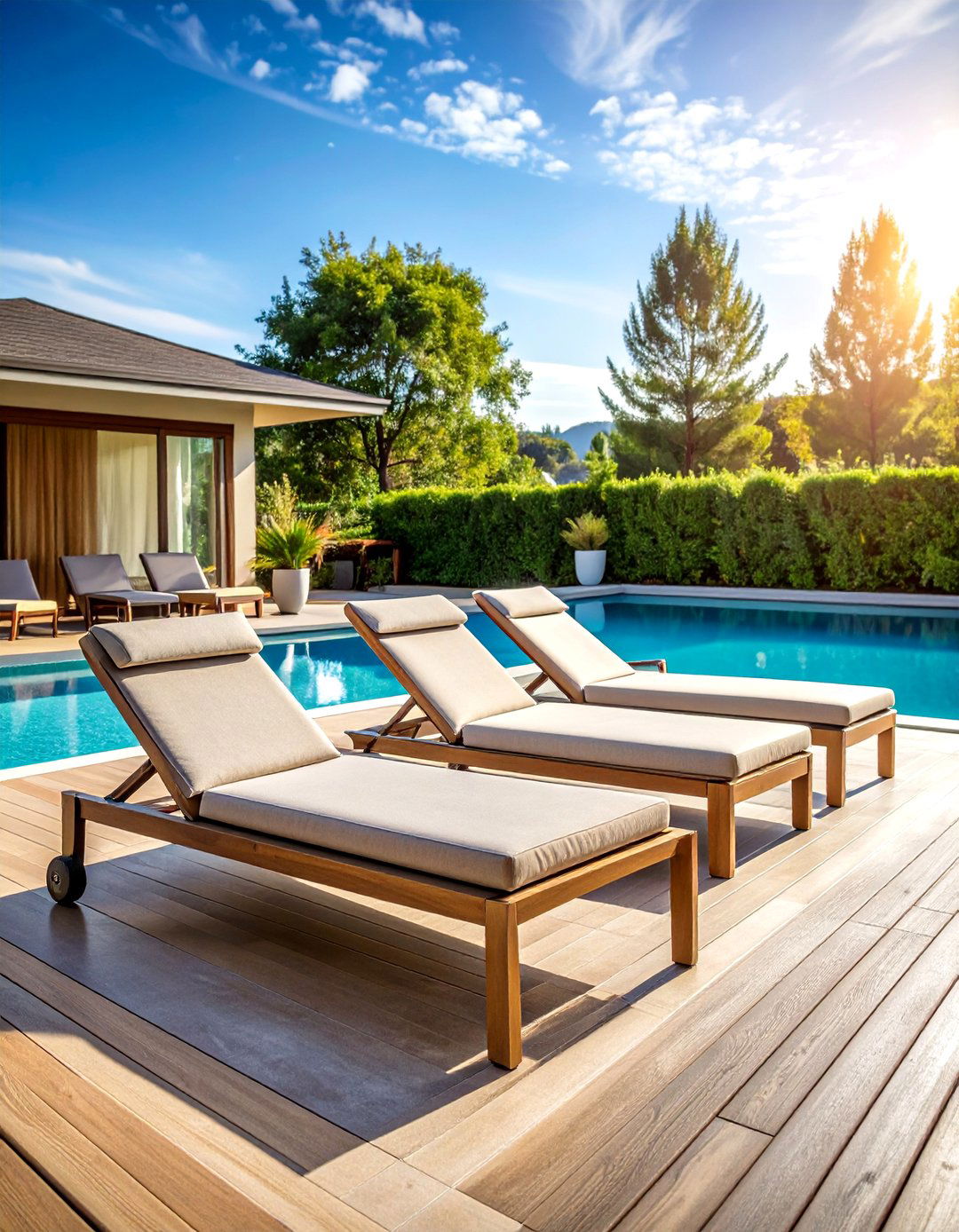



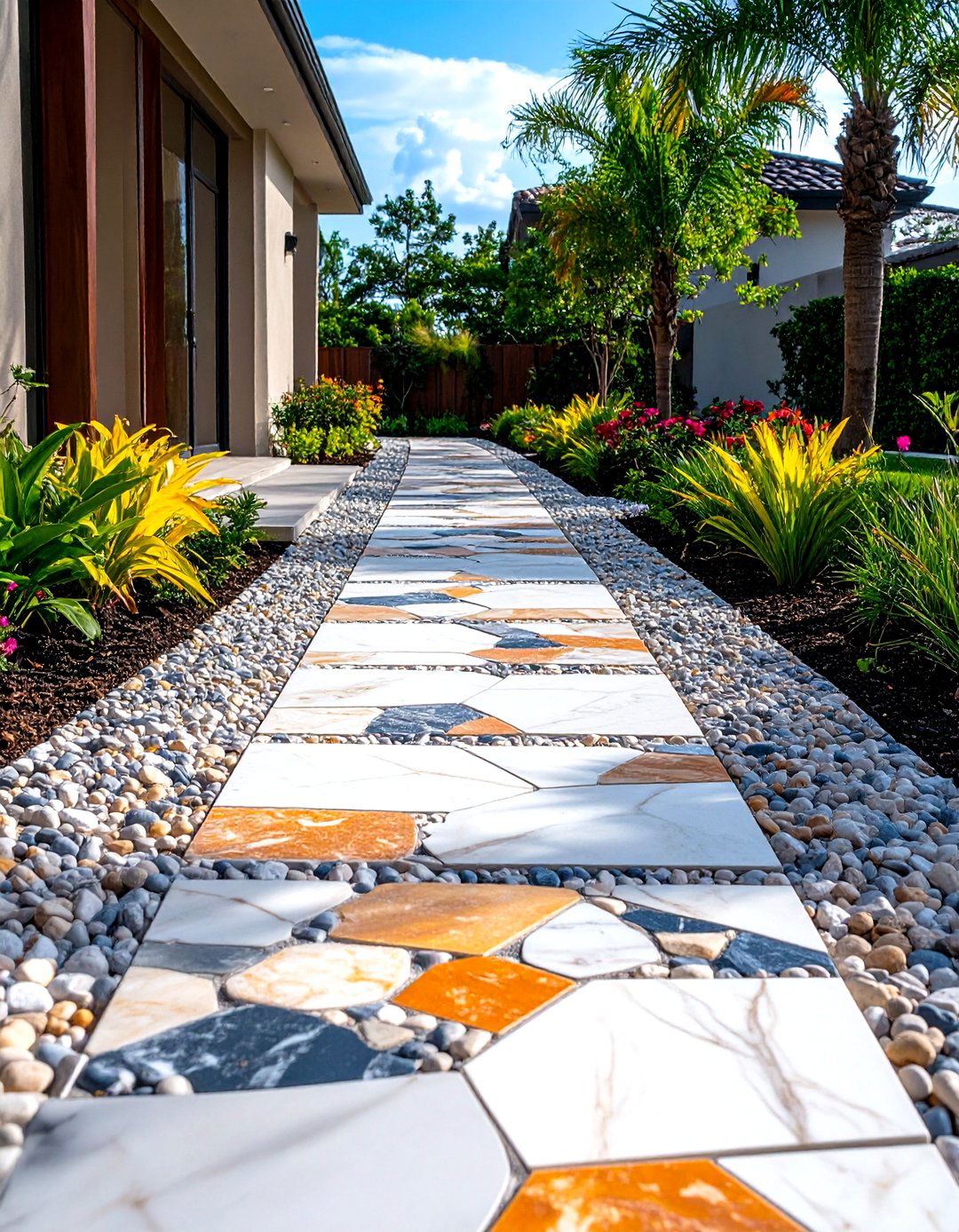

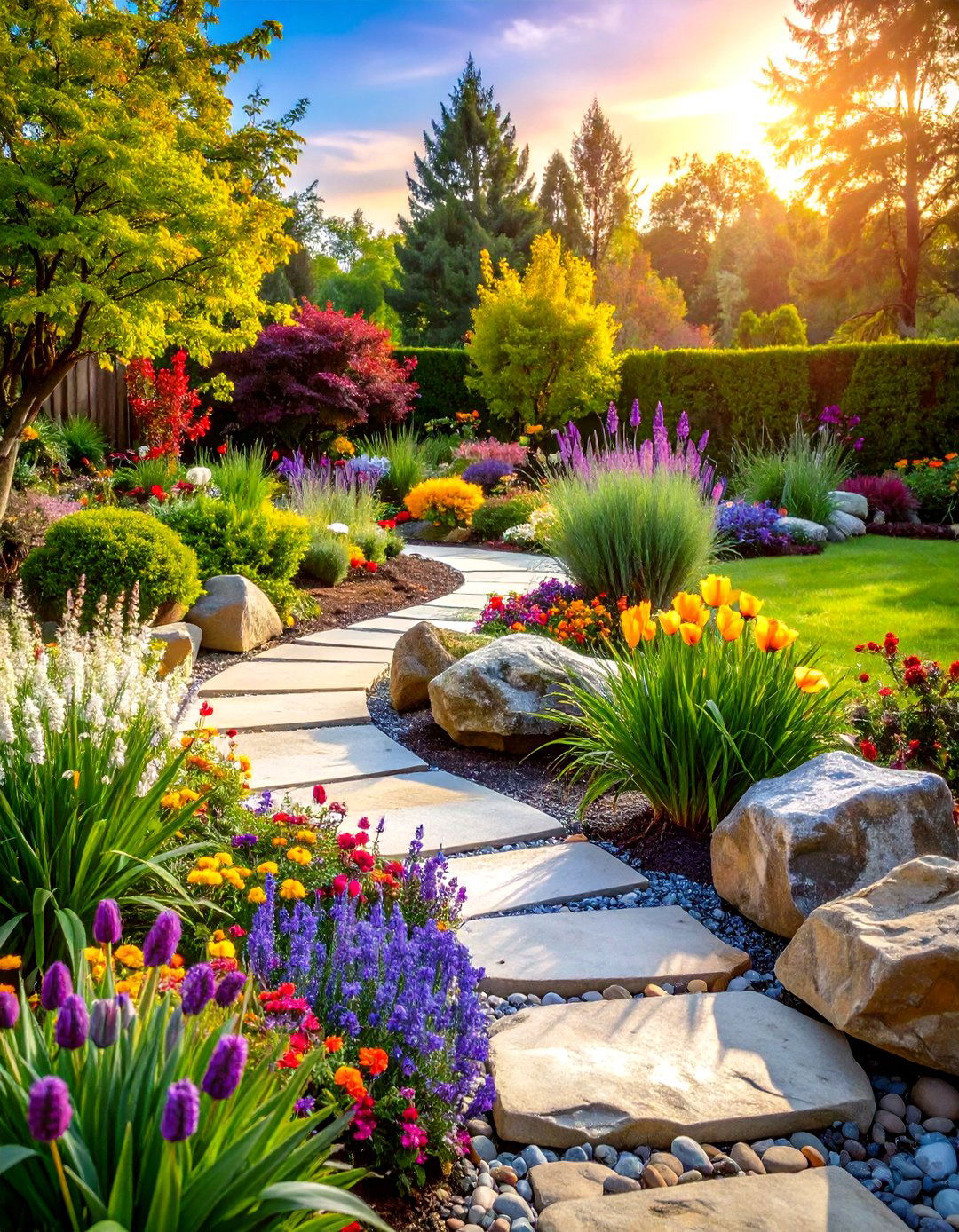
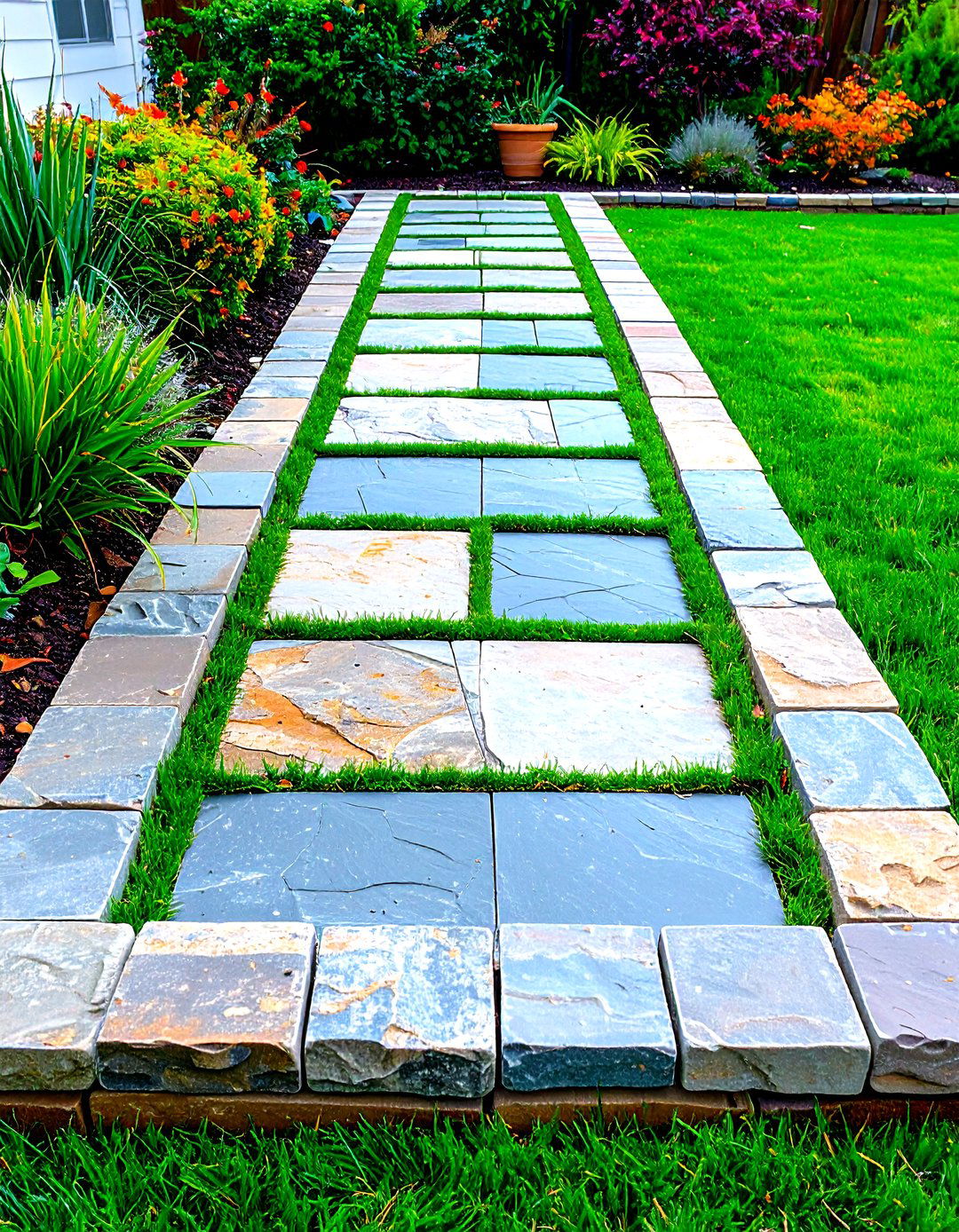
Leave a Reply